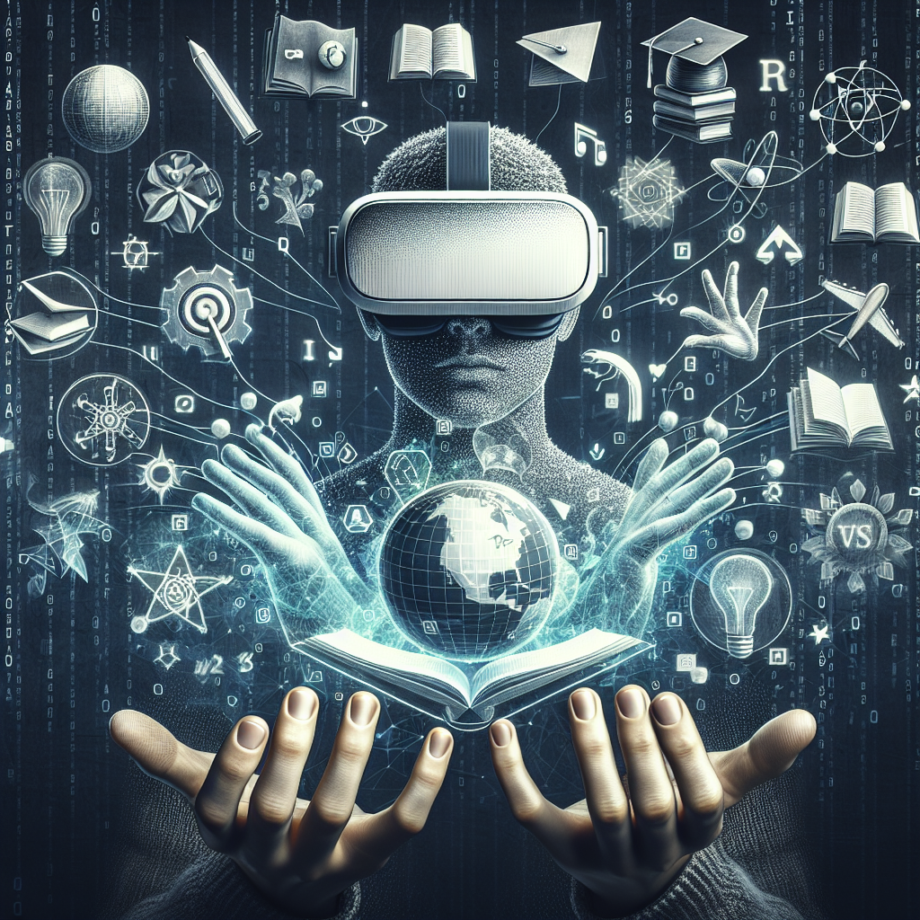
Introduction
In recent years, augmented reality (AR) and virtual reality (VR) have emerged as groundbreaking technologies, revolutionizing various industries, including education. By creating immersive experiences, AR and VR are changing the way we learn, offering students and educators new tools to enhance the learning process.
What Are AR and VR?
Augmented Reality (AR)
Augmented Reality overlays digital information onto the real world through devices like smartphones, tablets, or AR glasses. This technology enriches the user’s view by integrating interactive elements such as images, sounds, and other sensory enhancements.
Virtual Reality (VR)
Virtual Reality, on the other hand, immerses users in a completely digital environment, typically through VR headsets. This enables users to explore and interact with 3D worlds, offering a sense of presence that traditional media cannot match.
How AR and VR Are Transforming Education
Enhanced Engagement
AR and VR provide highly engaging and interactive learning experiences. For example, students can virtually visit historical sites, explore the human body in 3D, or conduct science experiments in a risk-free virtual lab. This hands-on learning helps to maintain student interest and improve retention of information.
Personalized Learning Experiences
Both technologies allow for personalized learning experiences tailored to individual students’ needs. Educators can create customized lessons that adapt to different learning styles, enabling students to learn at their own pace. This personalized approach can significantly enhance comprehension and retention.
Accessibility and Inclusivity
AR and VR can make education more accessible to students with disabilities. For instance, VR can provide immersive experiences for students who are unable to participate in physical field trips. Similarly, AR can present information in various formats, catering to different sensory needs and learning preferences.
Collaborative Learning
These technologies also foster collaboration among students. Virtual classrooms and labs allow students to work together on projects, share ideas, and collaborate in real-time, regardless of their physical location. This promotes teamwork and communication skills, which are vital for future career success.
Practical Training and Skill Development
AR and VR offer realistic simulations that provide practical training for various professions. Medical students, for example, can perform virtual surgeries to practice their skills without the risk of harming patients. Similarly, aspiring engineers can build and test virtual prototypes, gaining hands-on experience before applying their skills in real-world scenarios.
Challenges and Considerations
While AR and VR offer tremendous potential, there are challenges to their widespread adoption. High costs of devices and software, the need for robust internet connectivity, and ensuring that educators are trained to effectively use these technologies are some of the primary concerns. Additionally, considerations around privacy and data security should not be overlooked.
The Future of AR and VR in Education
The future of AR and VR in education looks promising. As technology advances and becomes more accessible, we can expect these tools to be increasingly integrated into classrooms worldwide. Continuous innovation will likely lead to more sophisticated applications, further enhancing the learning experience.
Conclusion
AR and VR are fundamentally changing the way we learn, providing immersive, personalized, and accessible educational experiences. While challenges remain, the potential benefits of these technologies are undeniable. As we continue to explore and develop AR and VR, their influence on education is poised to grow, shaping the future of learning in unprecedented ways.
